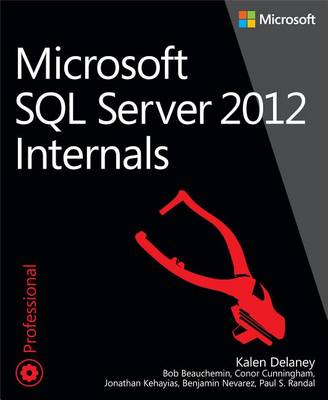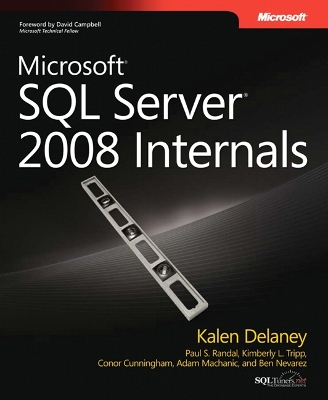Developer Reference
2 total works
Microsoft SQL Server 2012 Internals
by Kalen Delaney, Bob Beauchemin, Conor Cunningham, Jonathan Kehayias, Benjamin Nevarez, and Paul S Randal
Published 1 November 2013
Dive deep inside the architecture of SQL Server 2012
Explore the core engine of Microsoft SQL Server 2012-and put that practical knowledge to work. Led by a team of SQL Server experts, you'll learn the skills you need to exploit key architectural features. Go behind the scenes to understand internal operations for creating, expanding, shrinking, and moving databases-whether you're a database developer, architect, or administrator.
Discover how to:
Dig into SQL Server 2012 architecture and configuration Use the right recovery model and control transaction logging Reduce query execution time through proper index design Track events, from triggers to the Extended Event Engine Examine internal structures with database console commands Transcend row-size limitations with special storage capabilities Choose the right transaction isolation level and concurrency model Take control over query plan caching and reuse
Microsoft SQL Server 2008 Internals
by Kalen Delaney, Paul Randal, Kimberly Tripp, and Conor Cunningham
Published 1 March 2009
Delve inside the core SQL Server engine—and put that knowledge to work—with guidance from a team of well-known internals experts. Whether database developer, architect, or administrator, you’ll gain the deep knowledge you need to exploit key architectural changes—and capture the product’s full potential. Discover how SQL Server works behind the scenes, including:
What happens internally when SQL Server builds, expands, shrinks, and moves databases
How to use event tracking—from triggers to the Extended Events Engine
Why the right indexes can drastically reduce your query execution time
How to transcend normal row-size limits with new storage capabilities
How the Query Optimizer operates
Multiple techniques for troubleshooting problematic query plans
When to force SQL Server to reuse a cached query plan—or create a new one
What SQL Server checks internally when running DBCC
How to choose among five isolation levels and two concurrency models when working with multiple concurrent users
What happens internally when SQL Server builds, expands, shrinks, and moves databases
How to use event tracking—from triggers to the Extended Events Engine
Why the right indexes can drastically reduce your query execution time
How to transcend normal row-size limits with new storage capabilities
How the Query Optimizer operates
Multiple techniques for troubleshooting problematic query plans
When to force SQL Server to reuse a cached query plan—or create a new one
What SQL Server checks internally when running DBCC
How to choose among five isolation levels and two concurrency models when working with multiple concurrent users

